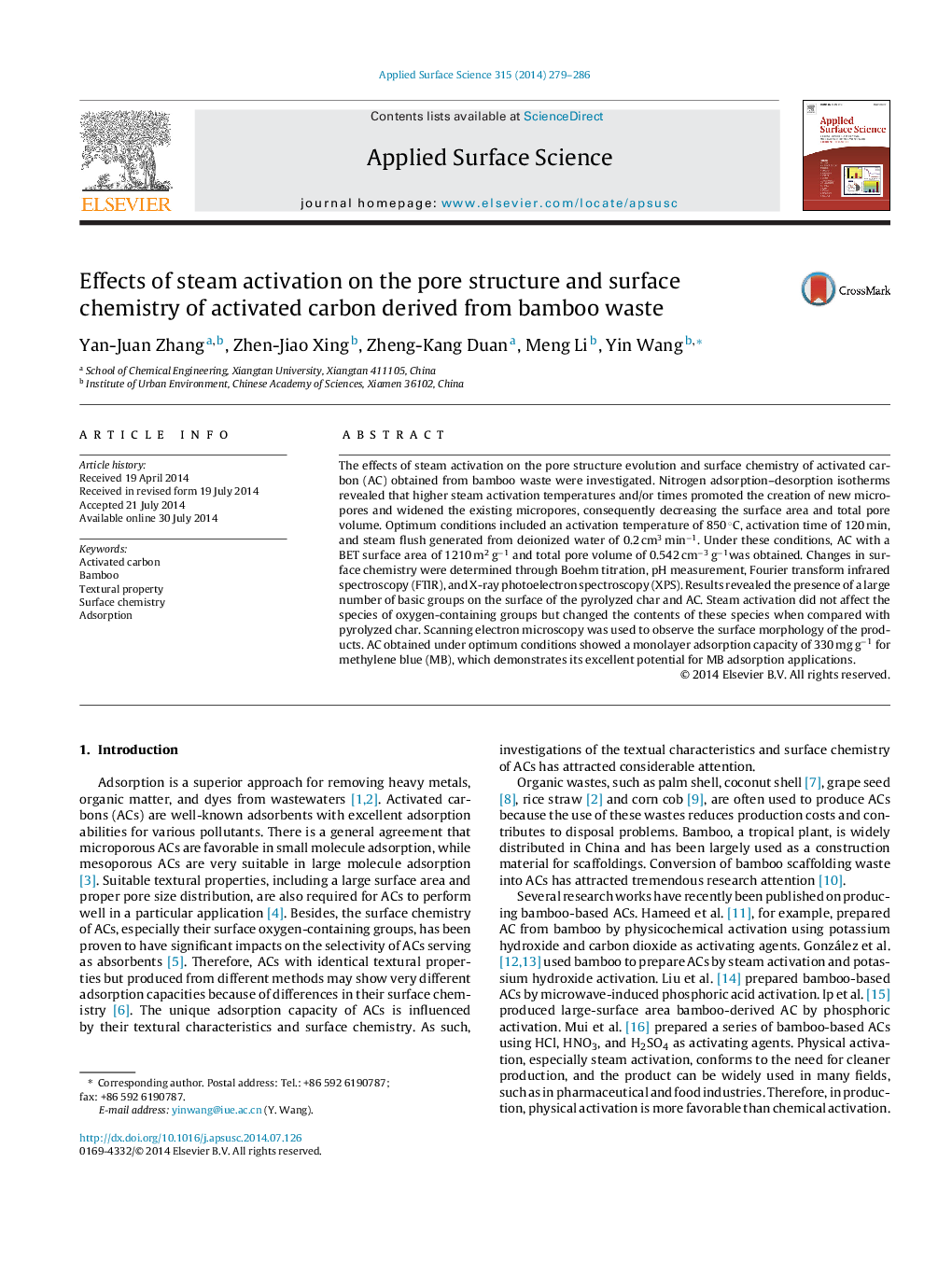| Article ID | Journal | Published Year | Pages | File Type |
|---|---|---|---|---|
| 5351158 | Applied Surface Science | 2014 | 8 Pages |
Abstract
The effects of steam activation on the pore structure evolution and surface chemistry of activated carbon (AC) obtained from bamboo waste were investigated. Nitrogen adsorption-desorption isotherms revealed that higher steam activation temperatures and/or times promoted the creation of new micropores and widened the existing micropores, consequently decreasing the surface area and total pore volume. Optimum conditions included an activation temperature of 850 °C, activation time of 120 min, and steam flush generated from deionized water of 0.2 cm3 minâ1. Under these conditions, AC with a BET surface area of 1210 m2 gâ1 and total pore volume of 0.542 cmâ3 gâ1was obtained. Changes in surface chemistry were determined through Boehm titration, pH measurement, Fourier transform infrared spectroscopy (FTIR), and X-ray photoelectron spectroscopy (XPS). Results revealed the presence of a large number of basic groups on the surface of the pyrolyzed char and AC. Steam activation did not affect the species of oxygen-containing groups but changed the contents of these species when compared with pyrolyzed char. Scanning electron microscopy was used to observe the surface morphology of the products. AC obtained under optimum conditions showed a monolayer adsorption capacity of 330 mg gâ1 for methylene blue (MB), which demonstrates its excellent potential for MB adsorption applications.
Related Topics
Physical Sciences and Engineering
Chemistry
Physical and Theoretical Chemistry
Authors
Yan-Juan Zhang, Zhen-Jiao Xing, Zheng-Kang Duan, Meng Li Meng Li, Yin Wang,
